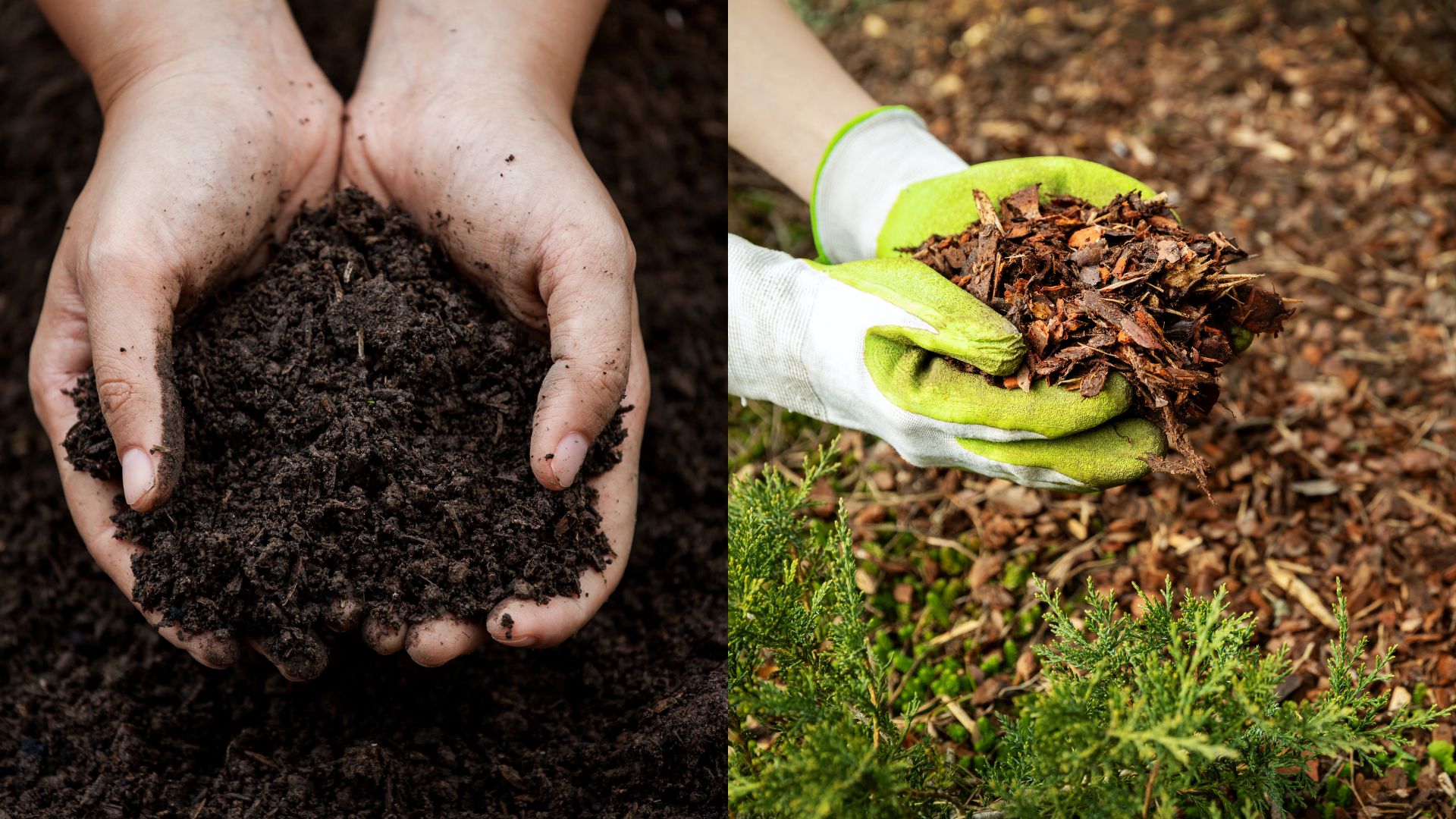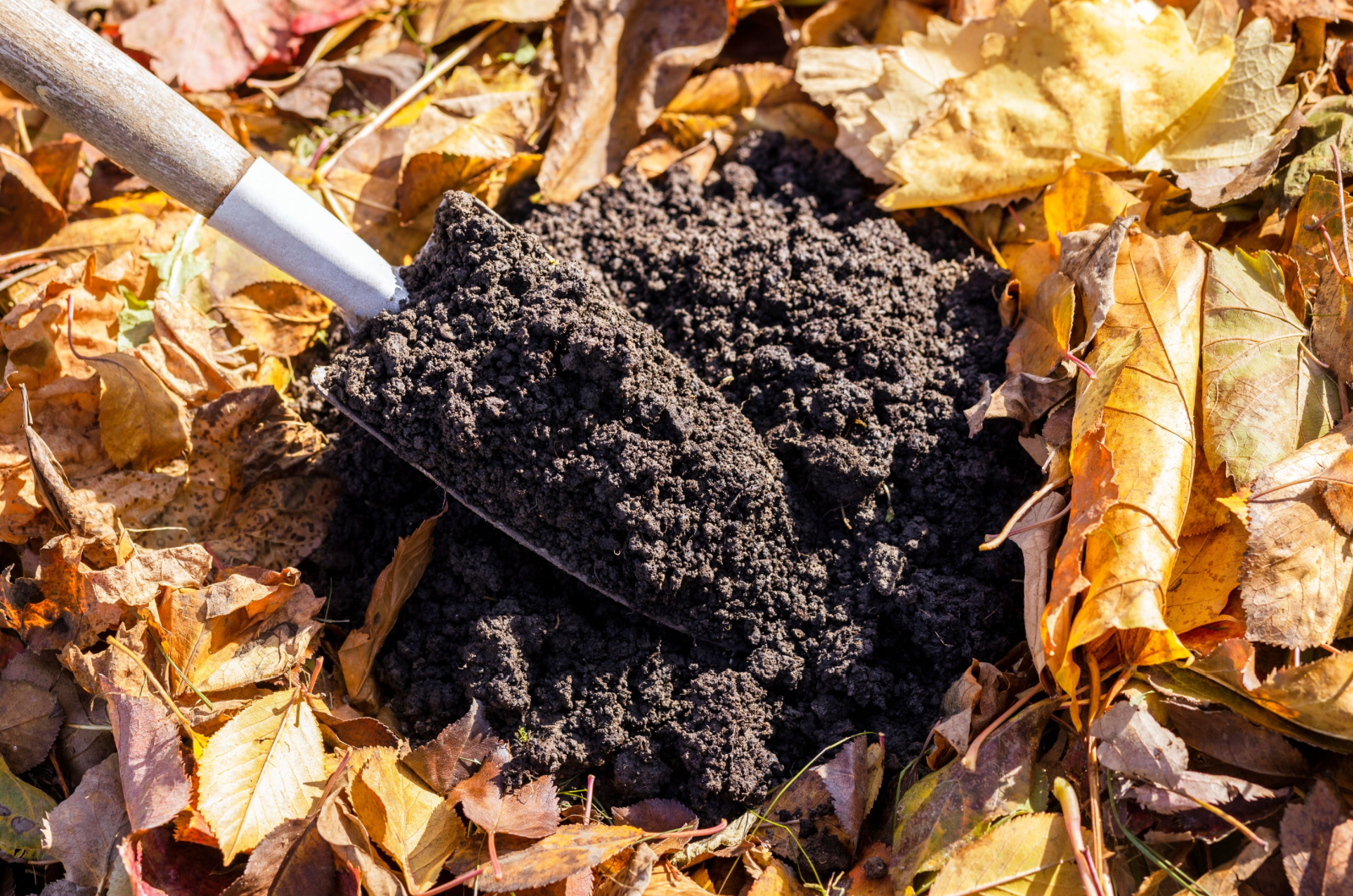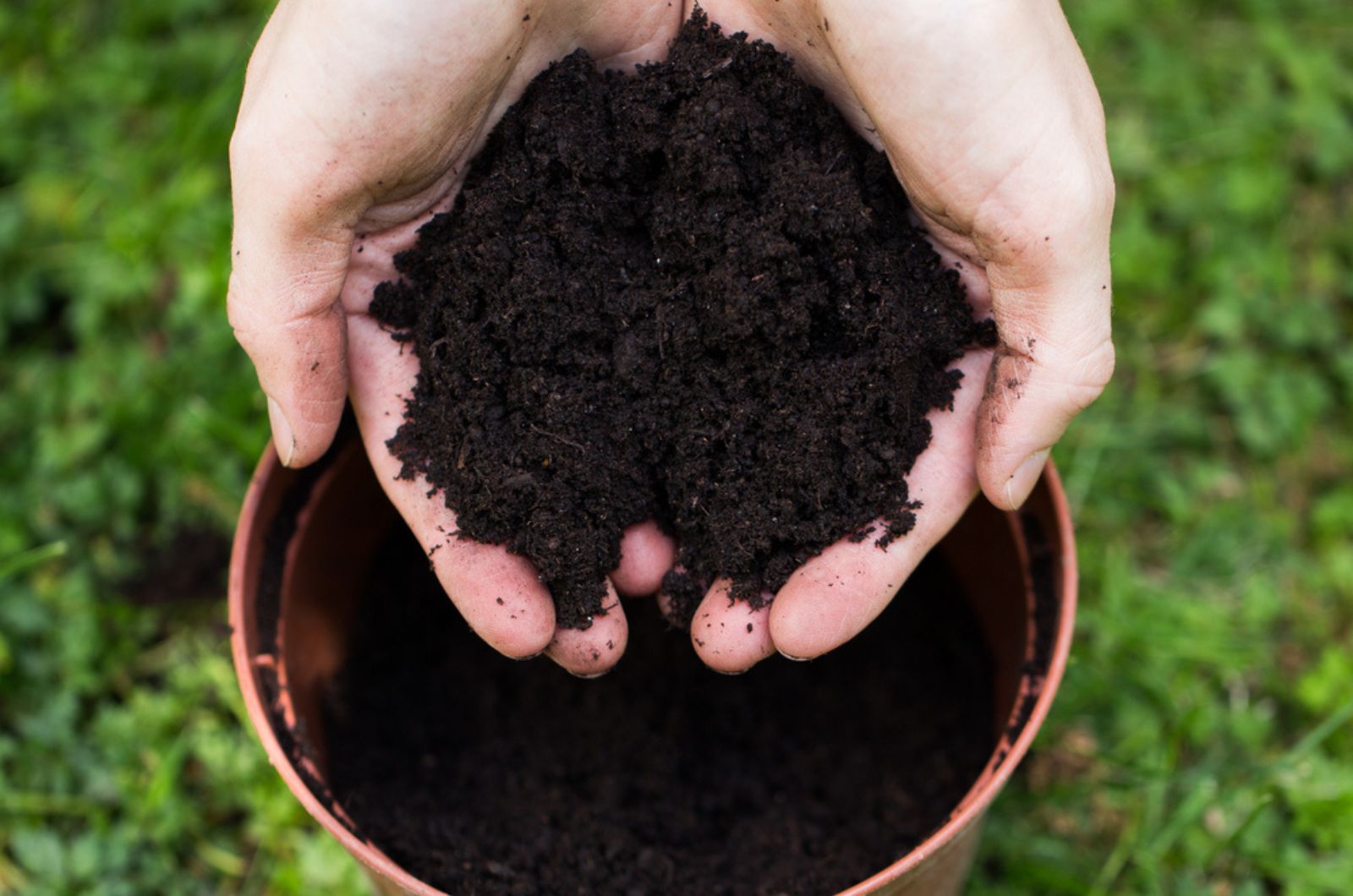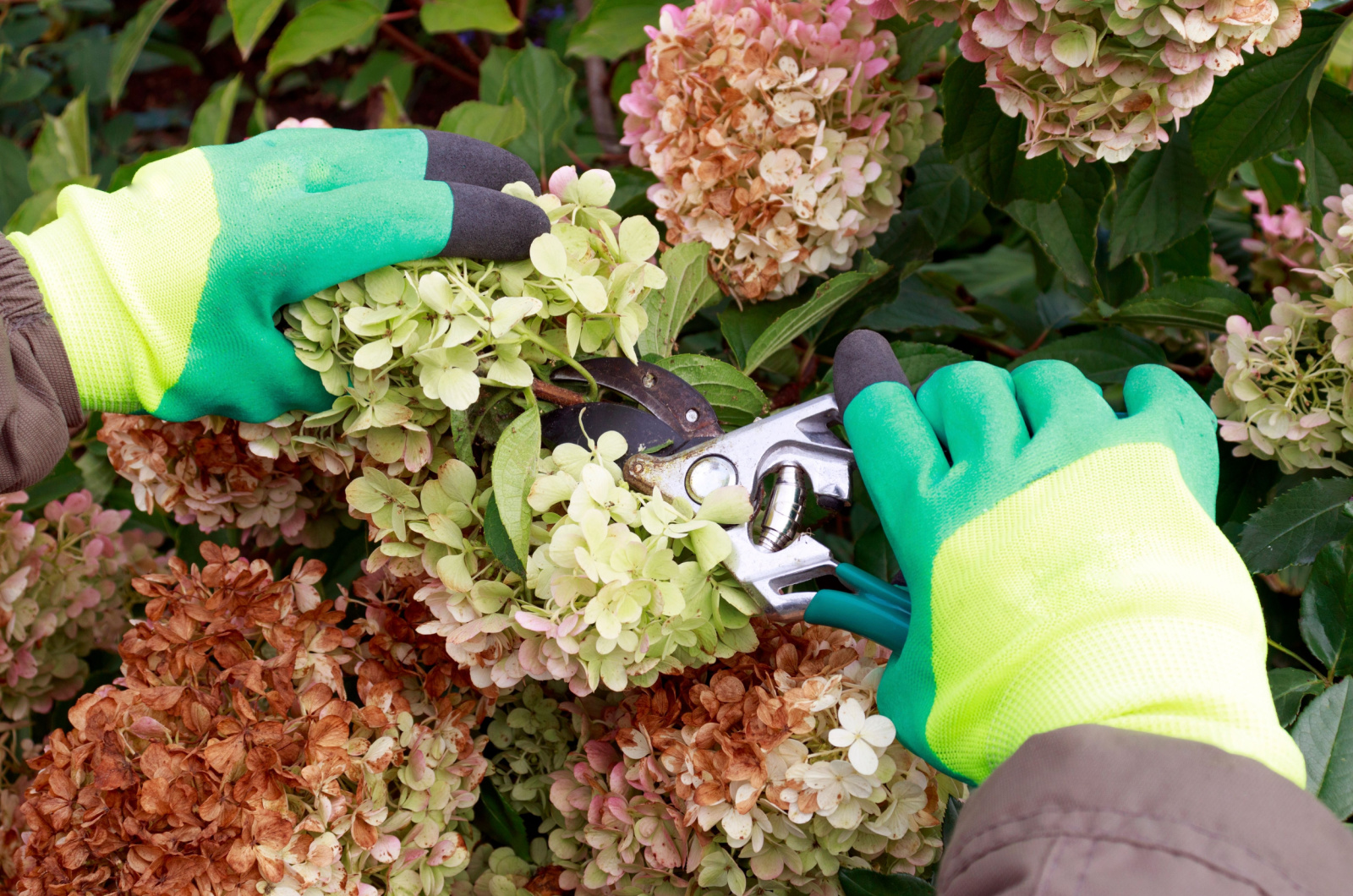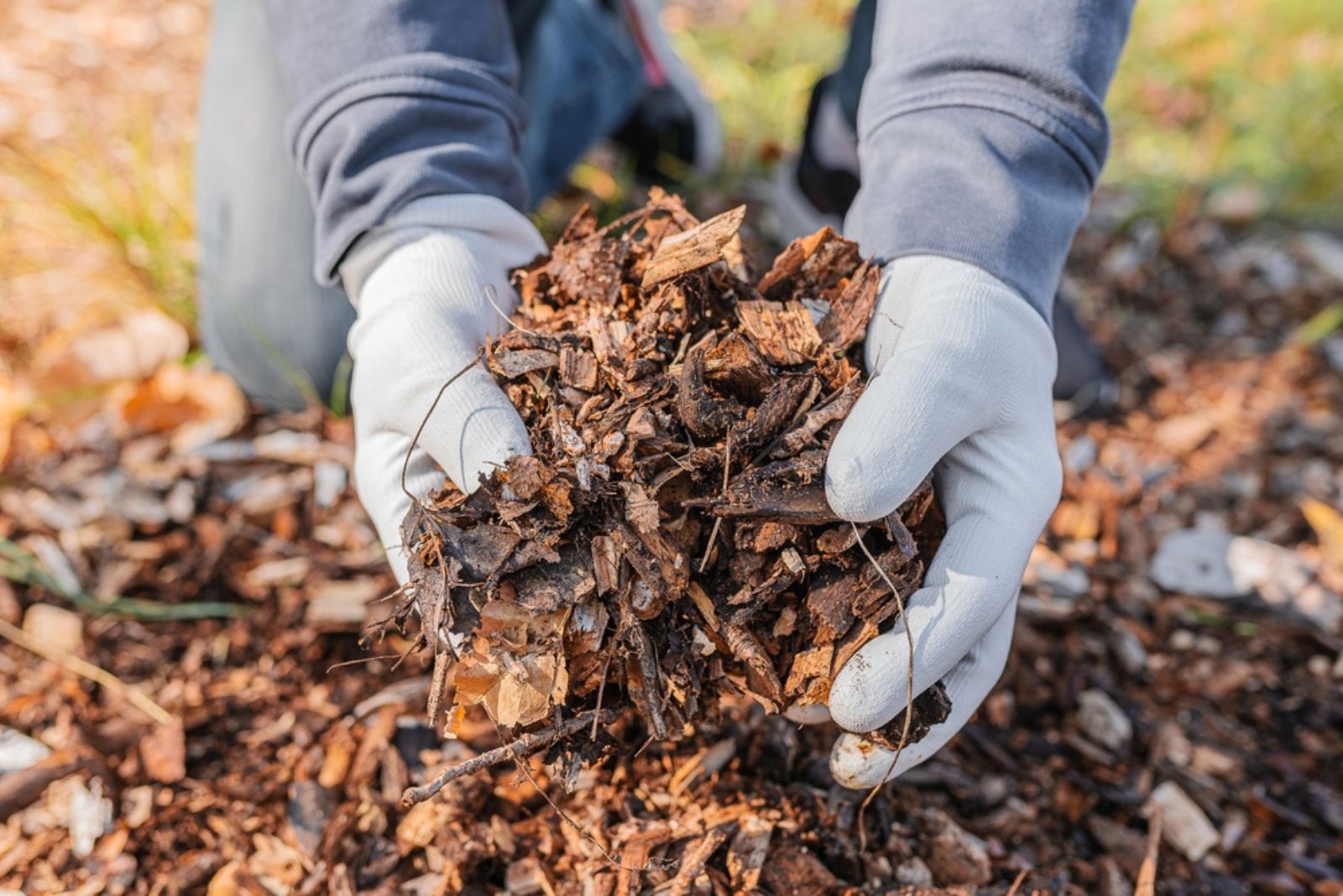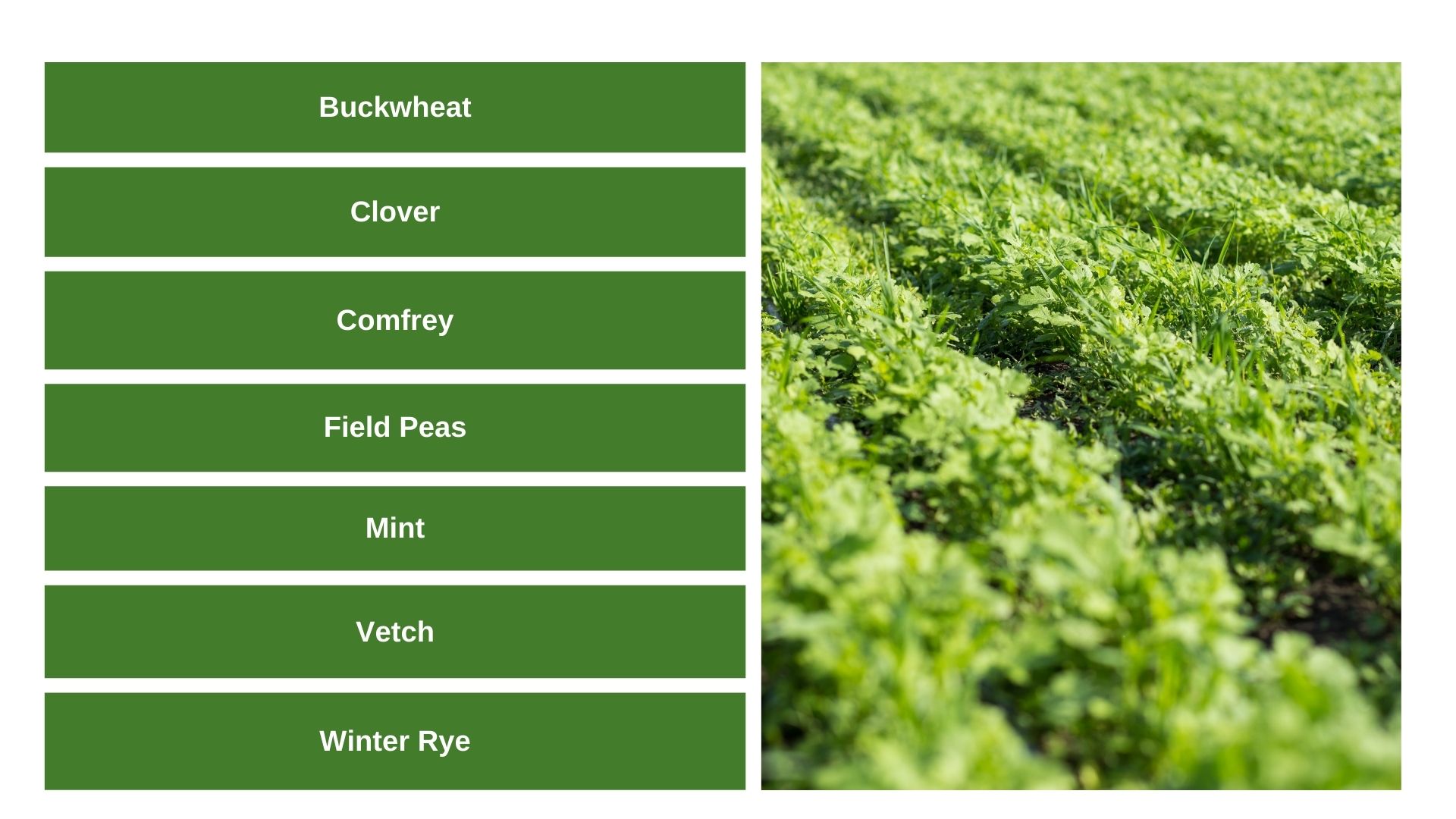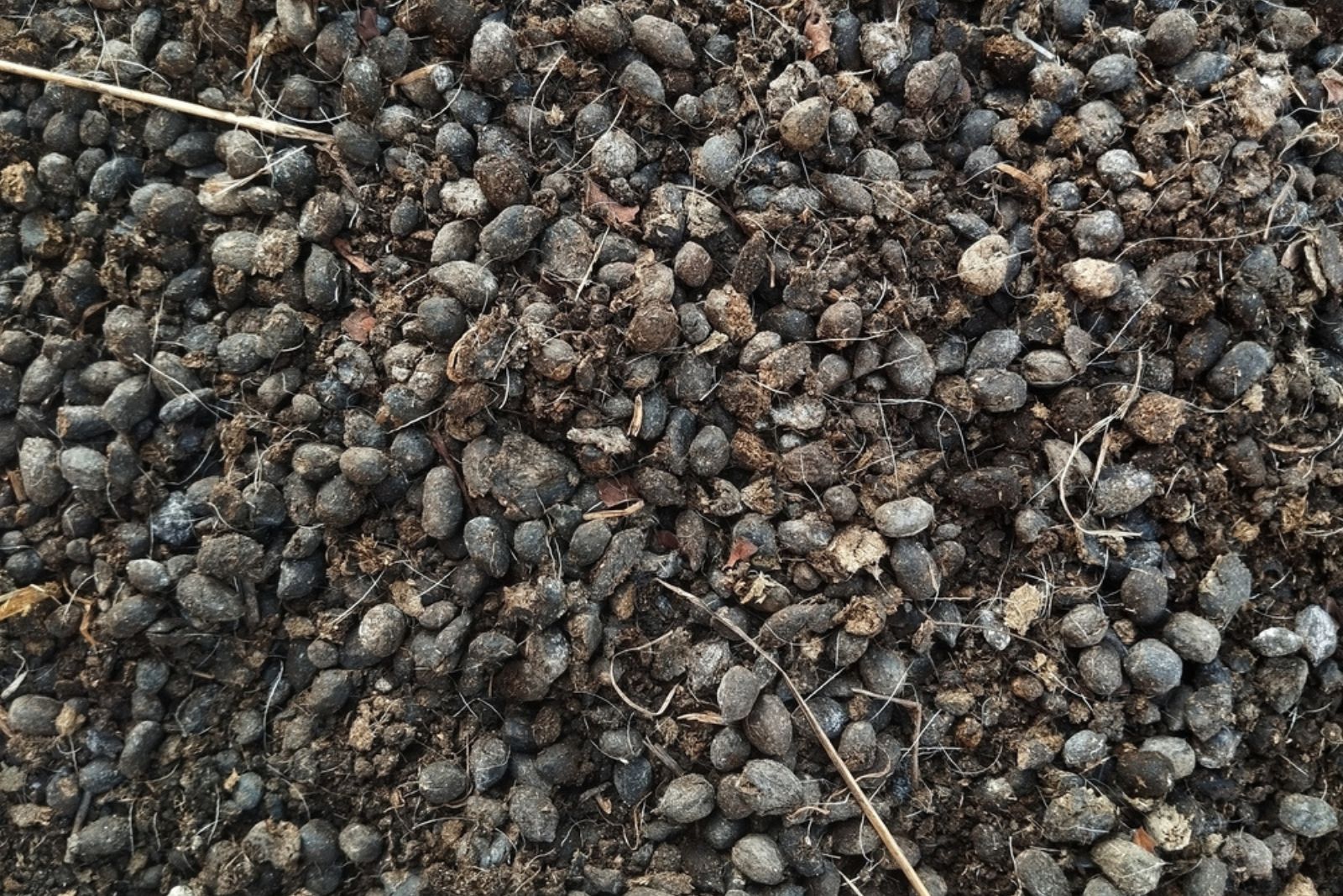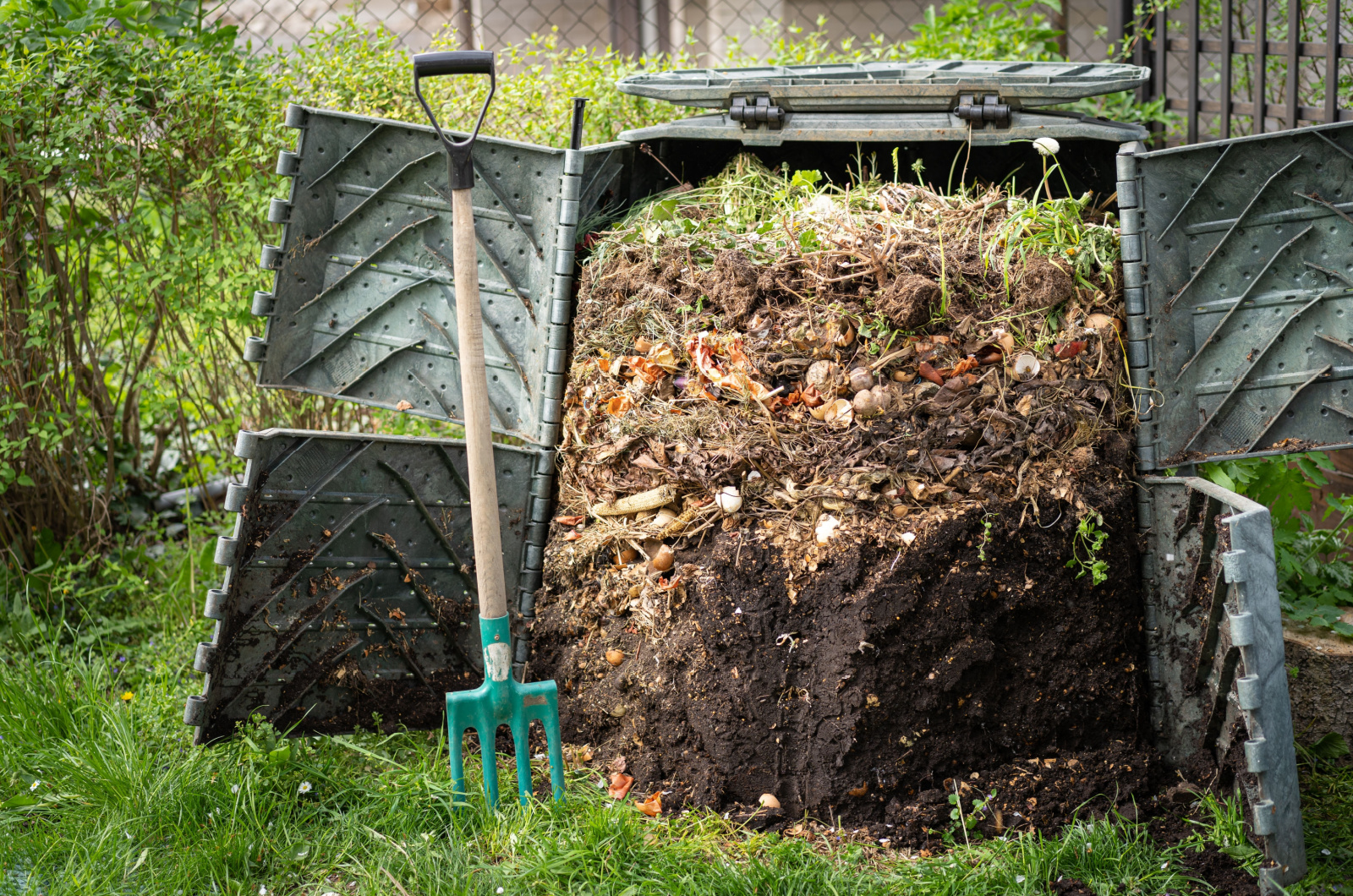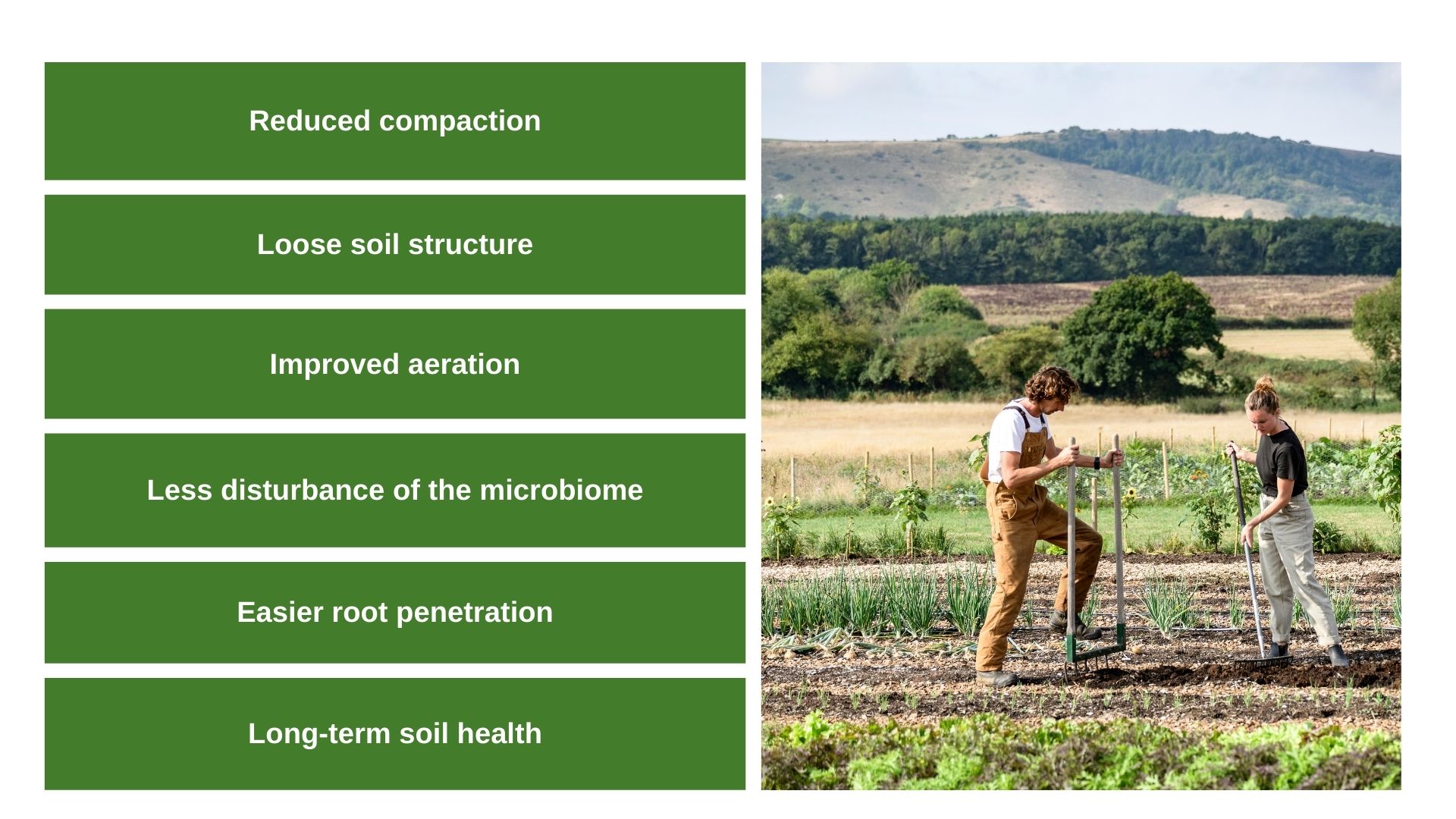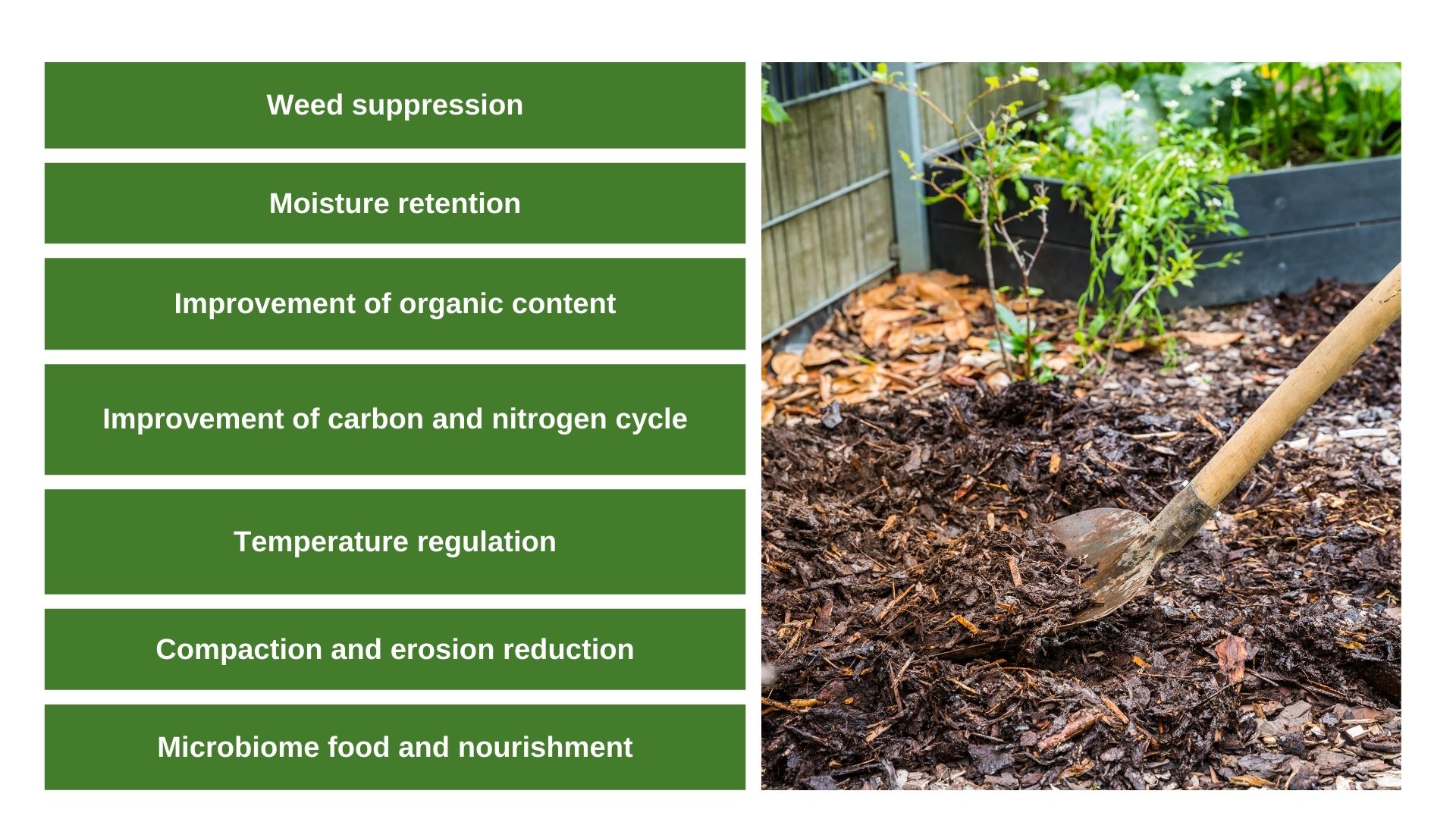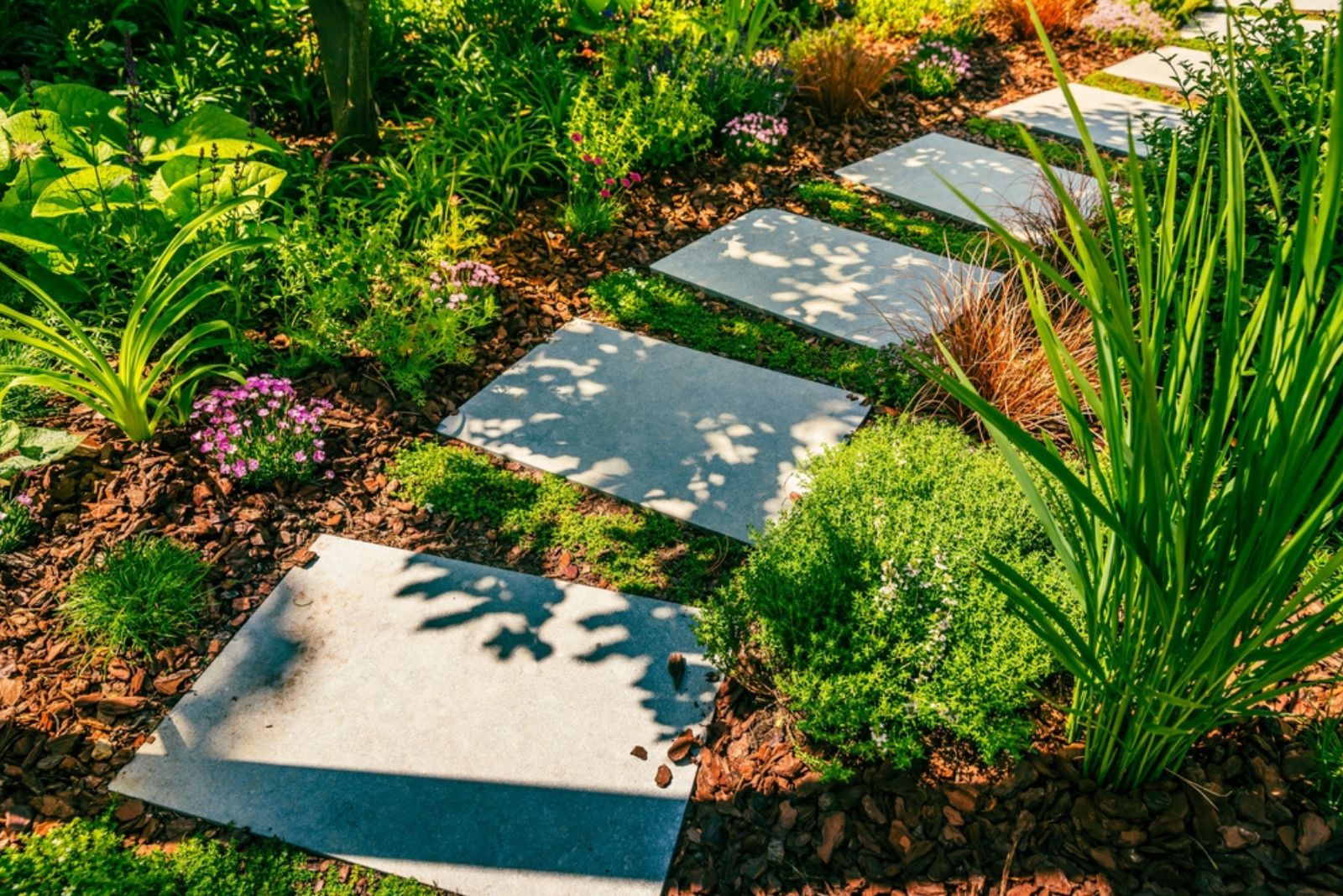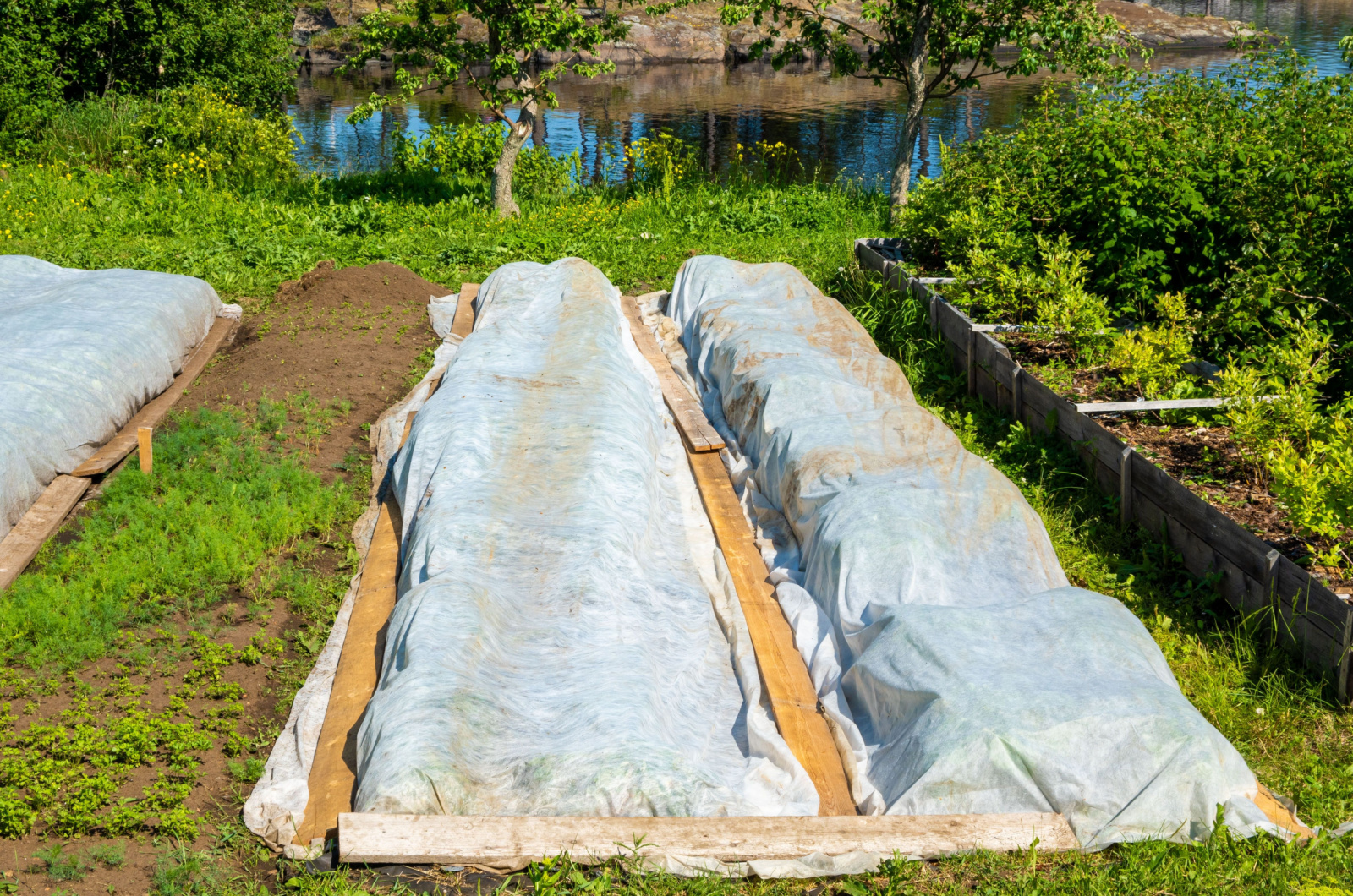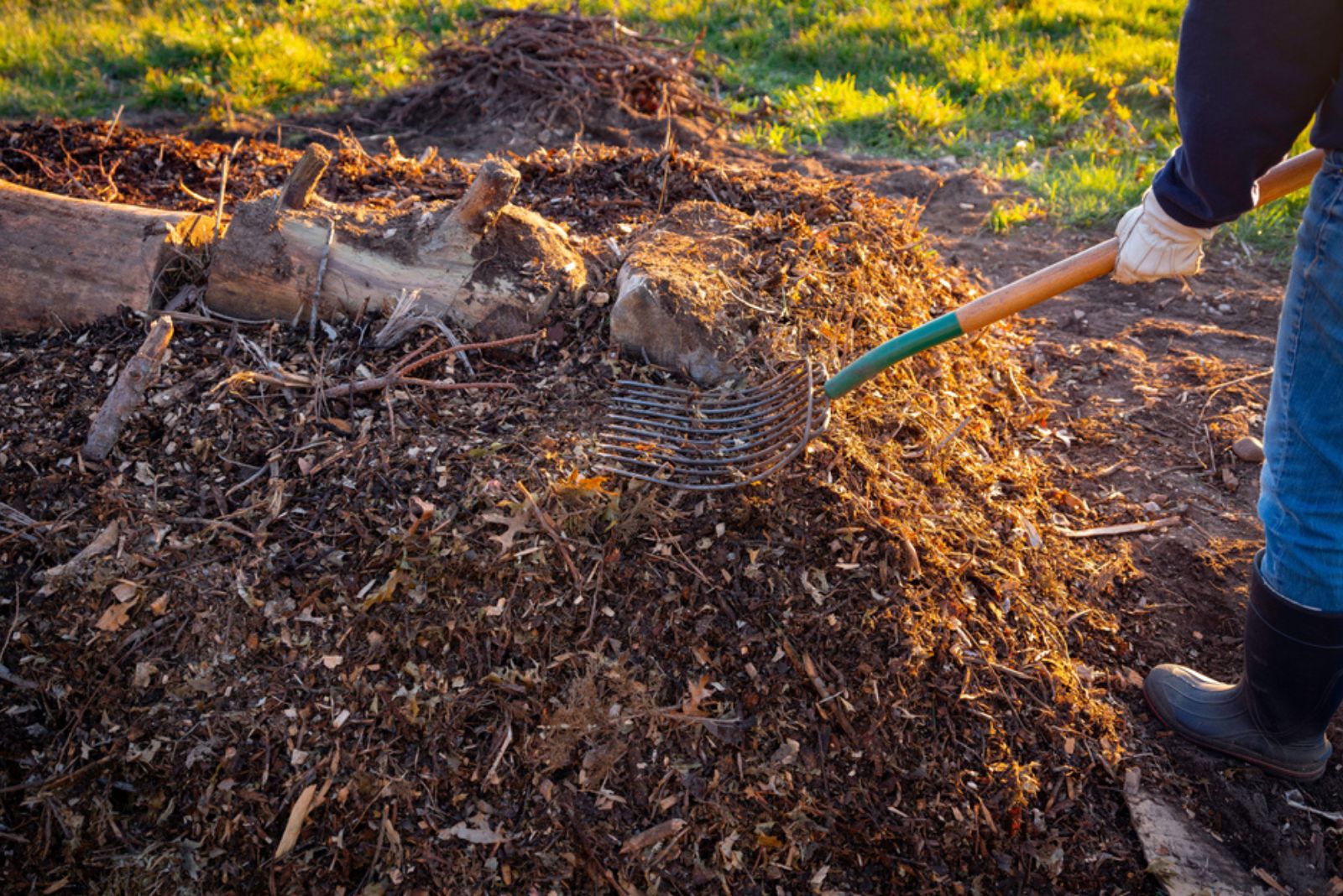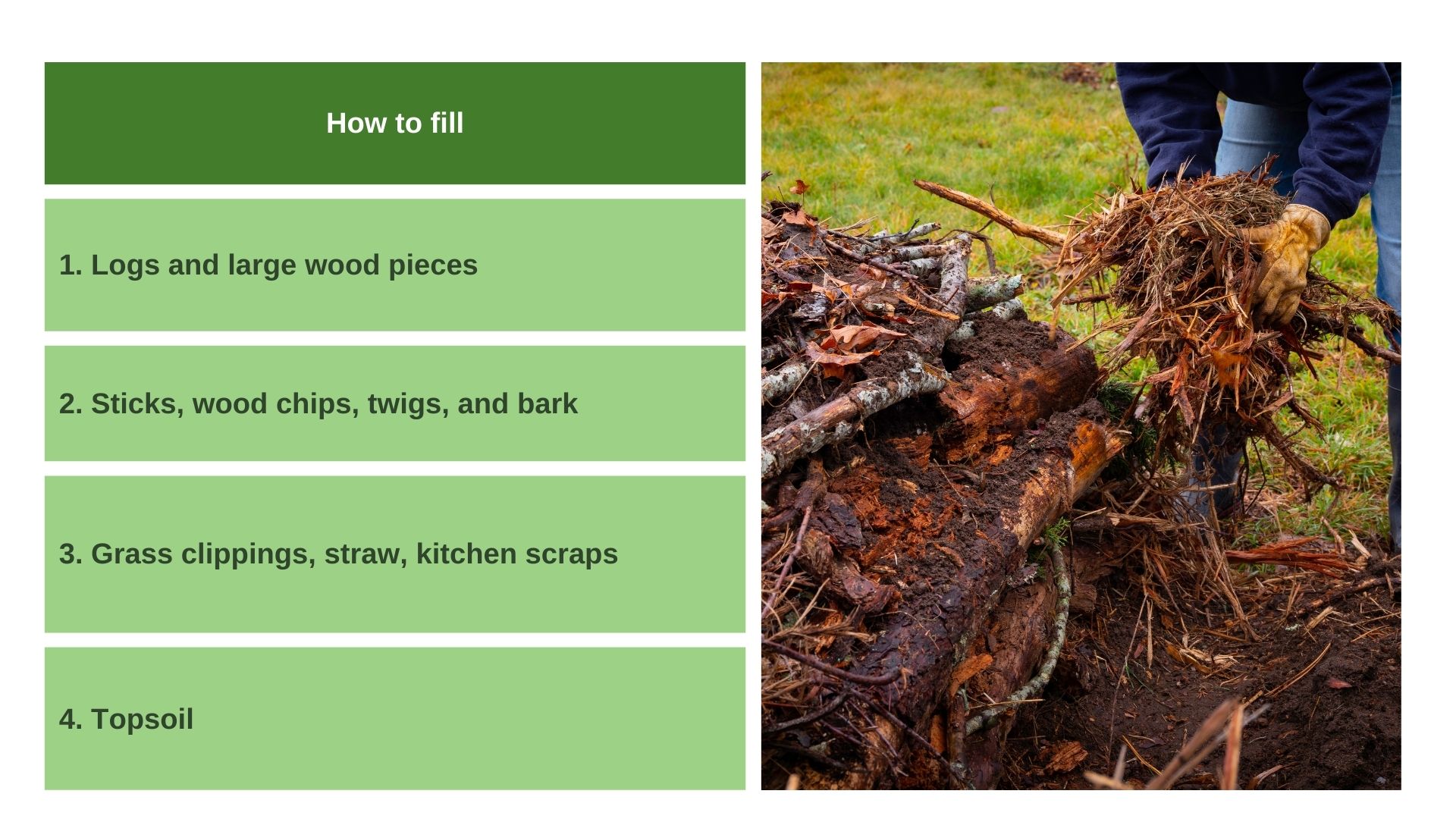You must have heard the expression “feed the soil.” That means providing your microbiome with organic matter.
Why? Because they break it down and enrich your garden substrate. Organic materials also feed the microbes and increase their activity. That way you’ll get a richer soil with less store-bought fertilizers.
But how can you do this? Here are 10 simple steps even beginners can follow!
Let’s get started!
Should You Feed Soil In Fall?
Yes, you should definitely nourish your garden substrate in fall. That way you can promote a richer and fluffier substrate ready for spring planting.
Feed both your annual and perennial beds. This method will put the former ones to sleep and keep the roots of your perennials healthy.
10 Steps To Enrich Fall Substrate
Feeding the soil is all about giving your microbiome something to munch on. That means adding organic matter so that earthworms, beneficial nematodes, bacteria, fungi, and protozoa can eat and decompose it.
Less organic content equals less microbes. And that results in poor soils and low yields.
Here’s how to combat it!
#1 Leave The Roots In
Don’t yank out those roots just yet. You’ll disturb your soil and microbial colonies less. This results in healthier and more fertile substrate come spring.
Also, leaving the roots in can make the soil looser and reduce compaction. They will slowly break down and become food for these microbes.
This method also reduces erosion. Winter storms, winds, and rains will try their best to take the topsoil away. But the roots will prevent this, especially if you have a hill garden.
Finally, some plants can enrich your soil with particular nutrients. For instance, we know buckwheat as a phosphorus scavenger. It releases substances that make this mineral more available to plants.
Leave it in the ground after it dies, and the crops that come after will be more than grateful. (1)
Cut And Compost Leaves And Stems
Okay, we’re leaving the roots in. But what about leaves and stems?
You should cut those back and throw them onto your compost heap. Take heavy-duty pruners and start trimming.
Or use a mower if your garden is at ground-level.
Get Rid Of Diseased Plants
Word of caution! Don’t leave diseased plants in the ground. Pull out all the roots you suspect have some kind of fungal disease.
Leaving them in the ground would contaminate it and put your other plants at risk. In fact, you shouldn’t even compost them. Instead, throw the diseased plants away or burn them.
#2 Chop And Drop
One way to improve your garden soil is using green manure or cover crops. That means terminating the plants once they grow tall enough but before they flower.
Chop them down and spread them all over your vegetable garden. The leaves and stems will slowly decompose and enrich your substrate with nutrients.
This is the same thing that happens in forests. Leaves and tree debris fall to the ground and decompose under the elements.
Use The Crops
The best green manure crops are legumes. But they’re not the only ones. There are many species known as dynamic accumulators.
These are the plants that uptake and store particular nutrients in their tissues. They also make it more available for other plants.
Here are some you can try out:
All you have to do is chop them down. Then, spread them over your garden and let nature take its course.
Warning: Avoid using diseased or pest-infested plants as green manure.
But Not These
There are some plants you should never use as green manure. It’s not without reason that so many gardeners suggest disposing of tomato plants.
Tomatoes, squash, and similar vegetables are prone to diseases. They will become a breeding ground for pathogens if you leave them in your beds.
#3 Apply Aged Manure
Make your spring beds more fertile by adding aged manure in fall. But be careful! This ingredient can contain too much nitrogen. This is particularly true for fresh (“hot”) manure.
Luckily, adding it in fall will give the microbes enough time to degrade it. Yet, it’s still good to use well-aged manure and reduce the risk of root burn even further. And it smells less foul!
Spread a 1-2 inch thick layer of well-rotted manure over your beds. Water it well and wait. This will help your microbiome decompose it.
#4 Or Compost
If you don’t have manure or you’re not ready to risk it with a hot one, try using compost. Many gardeners make their own, so it’s a free material that enriches your soil.
It will continue decomposing and prepare your soil for spring planting.
The easiest way is to dump bags of compost around your garden. Then, smooth it out with a rake, and that’s it!
Fall soil amendment is a great opportunity to check your composting bin or pile as well. Cover it with tarp to protect it from excess snow and rain. The last thing you want is smelly compost.
Pro tip: Have you ever wondered how much compost to add to your soil? A layer of 2-3 inches works fine.
#5 Mix Everything In
So you’ve left the roots, removed cover crops, and added compost or manure (or both). What now?
Now, you mix everything in and work it into the soil. But don’t dig around your garden too much.
It will disturb the soil and the microbes living in it. Instead, opt for a no-till method or use garden forks carefully.
You’ll get a healthy soil that way. Why? Because you’re not disturbing the microbiome or releasing CO2.
Undisturbed substrate equals thriving plants, higher yield, and healthier environment.
Try A Broadfork Aeration Tool
If you’re not going hard on your soil, then what are you doing? The good news is that you don’t need any tillers or to chop the substrate hard with your shovel.
Invest in a simple broadfork. It will aerate your soil without disturbing the microbiome too much. And it will mix in the organic matter with the substrate at the same time.
A short session with the broadfork will reduce compaction and soil hardness in fall!
#6 Flatten The Soil
You’ve fed, fertilized, and aerated your soil. What now? Now you rake it!
Level everything with a rake to get a smooth surface. This will keep your garden clean before adding final protection.
And it makes it easier to plant your seeds and seedlings come spring.
#7 Mulch Your Garden
Don’t forget to mulch your vegetable plots. It has so many benefits. It will heal your soil quickly and protect your plants from frost, among other things.
But what material to choose? There are so many of them out there.
The best mulch for vegetable gardens depends on your needs. Organic mulch feeds the soil and prevents weeds. Inorganic mulch is better for temperature moderation and moisture retention.
In general, any organic material that doesn’t contain herbicides is a suitable option. For herbaceous perennials, opt for straw or leaf mulch. And if you have shrubs or woody perennials, go with wood chips or bark.
If you use straw bale, coco coir, or any type of compacted mulch, fluff it up beforehand. Then spread it over your yard in a 2-3-inch thick layer.
#8 Pathways, Too
I know, I know! We don’t grow crops on walkways. But they can still enjoy mulching. It will keep them weed-free and save you a lot of trouble in spring.
Wood chips, straw, nut husk, etc. are all suitable options. Many gardeners prefer harder mulch for pathways. That’s because they can suppress weeds better and decompose more slowly.
But if you like your pathways soft underneath your feet, opt for straw or sawdust.
Also, mulch doesn’t have to be expensive. Ask your local arborist to give you some wood chips if they have it. Or contact the city cleaning service and inquire about leaves they may have.
These are win-win situations. These companies get rid of their trash and you get free (or cheap) mulch.
P.S. Inorganic mulch works fine for pathways.
#9 Consider Using Row Covers
Show your garden soil how much you care about it by covering it with row covers. This final step will make sure you get the loamiest substrate possible until spring.
Use landscaping fabric and secure it with rocks, logs, or sandbags. That way, you can prevent wind from moving it.
Row covers (or regular tarp) will prevent snow, wind, and rain from wreaking havoc in your garden. Precipitation will accumulate on the tarp, but it will have a hard time reaching underneath.
Another benefit of using row covers is preventing pests and rodents from building homes in your soil. It will also reduce the amount the wind blows away.
#10 Try Hugelkultur Or Lasagna Beds
These methods we’ve discussed so far were all about soil preparation for your existing beds. This one is about making new ones.
If your garden is ready for the fall, consider building new raised beds. Hugelkultur and the lasagna method are two techniques to fill your garden beds.
They will cut down the amount of soil you have to buy and use. And to top it all, they will land you with a robust substrate.
Here’s how to make them!
Hugelkultur
Hugelkultur and the lasagna bed method are rather similar. But there are some differences.
In hugelkultur, we start by filling the raised bed with logs and large branches. The next step is to fill in the gaps with twigs, wood chips, and bark.
Make the mounds at least 10-12 inches deep and cover them with topsoil.
The good news is that you can make these in raised beds or your garden.
I love this method because large wood pieces take a long time to decompose. They will feed your plants for longer and hold more moisture!
Finally, you’ll have to use a lot less soil. Another plus!
Lasagna Bed
Apply this method in your raised beds or in-ground gardens. First layer a piece of cardboard to suppress weeds.
Then, keep layering various kinds of organic materials. Straw and leaves, kitchen scraps, and compost are the usual ingredients.
Once you fill your entire garden bed, cover everything with topsoil. Make sure there’s at least a foot of organic materials.
P.S. Avoid adding rotting and diseased plant debris. It can contaminate your compost and destroy your vegetables.
Final Thoughts
So what’s the takeout? Fall soil nourishment is all about layering as much organic material as possible.
You can go with compost, manure, cover crops, and mulch. Try hugelkultur, lasagna beds, and similar methods, too.
All this may seem like a drag now, but it will pay off come spring!
References:
1. Valenzuela, H. & Smith, J. (2002). Buckwheat. UH Cooperative Extension Service.

